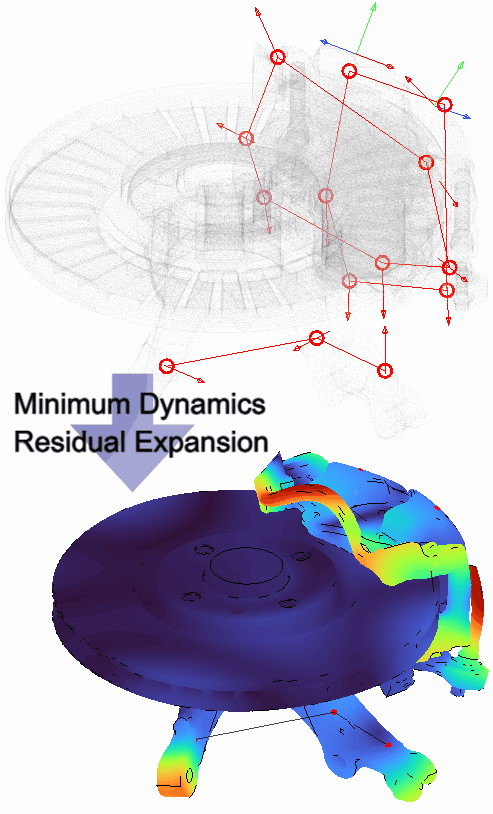How to ease analysis of spatially sparse vibration shapes ?
❗ Vibration measurements using accelerometers may be difficult to analyze because few sensors are often available leading to spatially sparse shapes. Animations of shapes involving single-axis sensors are even more tedious to read. Indeed, one tends to interpret the displayed displacement as the true behavior of the system, whereas motion is possible in directions perpendicular to the sensors (it is just unmeasured)
💡 To ease the analysis, SDT implements the Minimum Dynamics Residual Expansion method. It is a frequency domain algorithm that uses the experimental shape and its digital twin model to estimate the displacement field at all model DOFs.
🎬 The animation illustrates this expansion method, applied to the measurement of a full brake system with 12 single-axis and 2 triaxis accelerometers.

⚠️ Of course, trust in the estimated motion relies on the model quality, especially at locations that are far from sensors (in comparison with the wavelength of the shape).
👀 More details on this expansion technique can be found on this page of SDTools website: https://www.sdtools.com/solutions/expansion/. Further illustrations of the use of MDRE will be shown in future posts: test/FEM correlation check, experimental shape denoising, model updating, Structural Dynamics Modification techniques,… stay tuned !
🤝 Many thanks to Hitachi Astemo for allowing us to use one of their test case as illustration.
